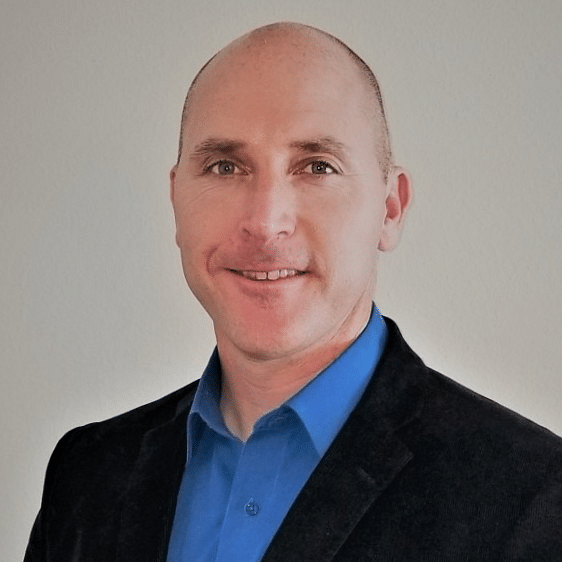
Turning competitors into channels for growth: The case of Mark Myers’ tax business, Peak Profit Solutions
By Jim James, Host of The UnNoticed Entrepreneur.
Over the last 15 years, Mark Myers has built Peak Profit Solutions to help business owners with their taxes. In the new episode of The UnNoticed Entrepreneur, he talked about how he’s done that, how he converted what was traditionally his competitors in the financial services area into channels for his business, and how he built a brand that brings businesses to him.
Image from LinkedIn
His Journey as an Entrepreneur
Mark went to the University of Florida, close to Gainesville where he is today. He moved to New York City and lived in Los Angeles for a number of years before moving back to Gainesville about four years ago. So for him, it was quite a geographic journey.
His undergraduate and master’s work was not in what he’s doing right now. It was in health sciences, physiology, and the management of sports businesses. In his first decade of work and career, he found that he was really good at running other people's businesses.
Regardless of the type of business — whether running a high-end health club in New York City or Los Angeles or running a shoe company — the process was the same. It’s about driving revenue, managing expenses, increasing EBITDA (Earnings Before Interest, Taxes, Depreciation, and Amortization) margins, and of course, the culture of the business and those working in the business.
These factors didn’t matter regardless of what business people were in. Anyone running a business needed to do them well.
This was his transition from running other people's businesses in an industry he had an education in. Then he switched gears and continued to work as an entrepreneur not in the space he was in but someone who focuses on what he’s learned thus far — and that is how to run a business and consult with business owners who potentially need his help in doing things that are important for their business.
In the last 15 years, it was a process of jumping into a chasm, going from being unnoticed to noticed.
Finding a Niche Within a Niche
Mark initially started Peak Profit Solutions as a niche offering in the financial services space, with insurance in particular.
Image from Unsplash
Business owners need insurance. There’s property, casualty, and general liability. But many don’t think too much about key man-ish life insurance policies, buy-sell insurance policies, and cash-balance plans. This is where he started, and it was a very competitive space, even if it’s a niche inside the financial markets and not everyone does that type of work.
He knew he was still a commodity within that space. As he was evolving in that business and as he was sharing conversations with clients about high-level insurance planning, he realised that most people he was working with were complaining about the tax pain that they had. And those weren’t getting resolved via their Certified Public Accountant (CPA).
It’s not to say that those CPAs are unskilled; it’s just that most CPAs are doing tracking and recording and filing. They’re not doing forward-looking explorations of the 75,000 pages of Tax Code to find the “coupons” that are there. He had an aha moment and realised that it’s an area unexplored for the most part by wealth advisors and CPAs.
With that, he can turn wealth advisors and other insurance advisors who were competitors into channels. He can solve problems for them, making them look great and enabling them to give more value to their clients by finding them more money.
From Insurance Policies to Taxes
One of the most powerful benefits of insurance is the non-taxable nature of a properly structured life insurance policy. And so, tax efficiency was part of his conversation in the insurance space.
Wealth individuals utilise insurance to the nine. If they fund an insurance policy and it's structured correctly, they’d have gains inside of that insurance policy. The insurance policy can grow cash within it, and it’s not taxed, and they can access those gains and the principal without paying tax. They can pass forward the remaining amount via the death benefit of the cash value to their heirs, non-taxed.
Moreover, he realised that there was an additional tax pain that wasn't being addressed, and he wanted to explore that. He found that there was a tremendous opportunity out there to bring solutions to clients that they weren't getting from their wealth advisor, insurance advisor, tax advisor, CPA, or enrolled agent.
His aha moment opened up his business significantly. Now, he’s doing something that those he was competing with want him to help them with.
Image from Unsplash
For the last 15 years, particularly the last seven to eight years, he had a miner’s hat on. He was always searching and seeking the coupons and doing due diligence on them to make sure that they would withstand. He was a miner to an extent but also a researcher and tester of whether a coupon will stand the test.
Essentially, if someone is applying for a tax credit or deduction with some type of value outside of a standard business deduction, they want to make sure that it is black and white in the code, and that it is defensible. Or, maybe, there’s been a use case or application of that many times in the past, and it has been proven to be fine.
Not a Competitor but a Partner for Growth
To get noticed in the community as not a competitor but a partner and potentially a source of revenue was initially challenging. But because Mark’s messaging was significantly different, it started to break in.
For his transition, he crafted a one-liner: “How to reduce your tax by 50% or more without replacing your CPA and receiving investment advice.”
Most people will get tax information from their CPA or wealth advisor. Some people also don't want investment advice from someone new, as they already have an investment advisor or an insurance person. So their question is, how do they get that information without replacing their CPA or getting investment advice?
He took that message to insurance advisors, wealth advisors, and tax professionals, asking if it’s the kind of pain their clients have (Though he knew that they did because he was in that space). Then, he’d share that they could solve that problem for their clients and do it with leverage. Meaning, they don’t have to take an ounce of their time or energy to implement these additional solutions because that would be Mark’s business. At the same time, Mark wouldn’t be stepping on the toes of their business.
Once that message became real, it became a “wildfire.” Now he gets CPAs who refer other CPAs to him. He gets wealth advisors who refer other wealth advisors to him.
Getting His Message Noticed
To roll out that very compelling message, Mark started networking. He went to business networking events because he knew there would be one, two, or three wealth advisors there. Also, there's generally at least one tax professional or CPA in any type of networking event that's structured.
He started going to those and focused on speaking to those individuals and the masses because there could be business owners or others with high tax burdens in those meetings who would like to talk to him.
He also focused on those channels that already had trusted relationships with their clients. He just needed to find those individuals.
This was his starting point. Then, he found that there’s automation on LinkedIn.
Image from Freepik
There are opportunities in the platform to create automation where he can say that he wants to connect with tax professionals, CPAs, tax preparers, bookkeepers, wealth advisors, and insurance advisors. So he started a campaign where he would every day send out these automated messages. He also gets to pick in Atlanta and North Carolina and people in his space in those areas.
His invite would state that he’d want to connect with a prospect and that they can work well together as he could help them find more money for their clients.
When prospects start receiving and accepting his invitation, he has this campaign to get an appointment with them: “Let's just talk for 15 minutes. I don't do your work, but I can make the work you do work more by finding money that maybe you didn't realise your clients had.”
That drip process, in combination with going and finding those key channels, was instrumental for him. Currently, he gets appointments week over week with individuals, particularly from LinkedIn, who want to learn more about his services.
The Tools He’s Using
The tool he’s using is Lead Central. It allows him to choose campaigns in any city or state in the United States. He can also filter that campaign for an individual or a type of person that he wants to connect with. What industry are they in? What do they do in that industry? How long have they been in that industry? What kind of experience do they have?
With all that, he can send them an invitation to connect with them through a brief message.
The tool also allows him to create a series of messages that will drop into their inbox every few days so that they’re not annoying people. Those messages are crafted to essentially pique their interest.
In that process, he was able to build a pipeline. Now, he’s getting lots and lots of connections every week. He also has autoresponders asking prospects to work with him and find time to chat. And all this has created a lot of conversations, which has created a lot of opportunities because there are people — with one or three clients — who want to work together with him to solve their clients’ problems.
Image from Freepik
For Lead Central, he spends less than $150 per month, including the upgraded fee for LinkedIn, which he uses to access Sales Navigator.
He also has a Customer Relationship Management (CRM) tool called EngageBay.
Mark admitted finding the right CRM tool is difficult because it can be pricey. People working for an enterprise-type company are generally utilising enterprise CRMs that might not be able to integrate into small businesses because of the cost-efficiency and complexity.
For example, Salesforce. It’s a phenomenal CRM platform, but it's very complex, and it can be very pricey.
He did a lot of due diligence on CRMs and found EngageBay as a formidable platform. He can pull people in from LinkedIn and people that go to his website to enquire for more information — and automatically respond to them and ask them to set up an appointment. He sends messages assuming that they approve because, on LinkedIn, users can’t send people messages unless they approve.
Mark is integrating Lead Central with EngageBay, and he’s been doing it himself. He’s doing it with 50% efficiency compared to using all the bells and whistles of Sales Navigator and those two platforms. Still, he knows that he needs to continue to work on scaling his business to make sure that he can handle the incoming workflow.
On Finding Unique Opportunities
To have an opportunity or an avenue that is unique and different from a competitor is what worked for Mark in terms of getting noticed and keeping his business alive. Ultimately, it’s about doing it in a way where entrepreneurs align themselves with their competitors.
Image from Freepik
The biggest aha moment for him was when he realised he could still stay in his industry and help the business owners he wanted to help — but access them through his competitors.
If it’s possible, entrepreneurs must carve out an area in their businesses that they can do and not step on the toes of their competitors in their space. Instead, they must align with them knowing that what they have is something really special.
This works particularly if they’re in a commodity-type business and offering a non-commodity within that business. In this case, the same people who are competing with them could bring them into a joint work or bring them into their business.
To find out more about him, visit www.peakprofitsolutions.com. On his website, he allows people to book a 15-minute consultation with him that’s completely free. They can also sign up for a case study.
The UnNoticed Entrepreneur podcast is sponsored by Prowly, the all-in-one software for leveraging PR activities. Boost the media relations game for your business - get more coverage while saving time and money on everyday tasks.
This article is based on a transcript from my podcast The UnNoticed Entrepreneur, you can listen here.
Cover image by snowing on Freepik







